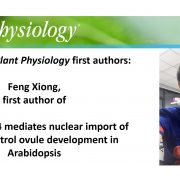
Recognizing Plant Physiology first authors: Feng Xiong
Plant Physiology, Plant Physiology: Author ProfilesFeng Xiong, co-first author of IMPORTIN β4 mediates nuclear import of GIFs to control ovule development in Arabidopsis
Current Position: Ph.D. student in State Key Laboratory of Crop Biology, College of Life Sciences, Shandong Agricultural University, China
Education: M.S. in State Key Laboratory…
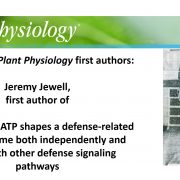
Recognizing Plant Physiology first authors: Jeremy Jewell
BlogJeremy Jewell, first author of Extracellular ATP shapes a defense-related transcriptome both independently and along with other defense signaling pathways
Current Position: Postdoc, Department of Plant Pathology, Washington State University, Pullman, USA
Education: PhD, Molecular Plant Sciences,…
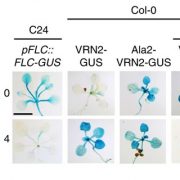
Plant PRC2 subunit VRN2 stability regulation through oxygen dependent proteolysis
Plant Science Research WeeklyPolycomb repressive complex 2 (PRC2) represses the expression of its gene targets epigenetically and VERNALIZATION 2 (VRN2) is a subunit of the PRC2 complex in Arabidopsis. The PRC2-VRN2 complex, among other roles, regulates flowering after long cold exposure. Gibbs and coworkers identified VRN2 as a…
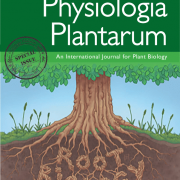
Special Issue: Root Biology (Physiologia Plantarum)
Plant Science Research WeeklyThe year 2019 kicks off with a special issue on root biology, with all articles free to access for six months. Topics include interactions of roots with parasites and symbionts, root branching, transport in the root system, and roots of woody species. (Summary by Mary Williams) Physiologia Plantarum…
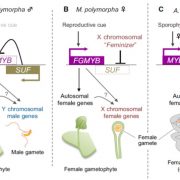
A bidirectional switch controls sexual dimorphism in the liverwort (EMBO J)
Plant Science Research WeeklyBryophytes spend most of their lifecycle in the haploid, gametophytic form, of which there are two types, male (sperm forming) and female (egg forming). Hisanaga et al. investigated the genetic basis that determines sex in the model liverwort Marchantia polymorpha. Their findings are fascinating. A single…

AP2-like transcription factor SUPERNUMERARY BRACT controls rice seed shattering and seed size (Plant Cell)
Plant Science Research WeeklyNon-shattering seed, or seed that stays attached to the stem when mature, is a key domestication trait that makes harvesting easier. Previous studies have identified several domestication genes that suppress the formation of the seed's abscission zone, thus preventing shattering. Jiang et al. used a…
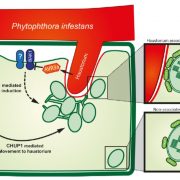
Chloroplasts navigate towards the pathogen interface to counteract Phytophthora infection (bioRxiv)
Plant Science Research WeeklyChloroplasts have diverse roles in plant defense, including contributing to the production of defense compounds. Toufexi, Duggan et al. show new data indicating the dynamic relocation of chloroplasts to the contact point of the oomycete pathogen Phytophthora infestans. Infection also causes an increase…
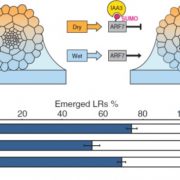
Root branching toward water involves posttranslational modification of transcription factor ARF7 ($) (Science)
Plant Science Research WeeklyRoots do amazing things, particularly in terms of how they optimize their growth in response to their very local environment including water, nutrients, microbes, and physical obstructions. Branching in regions of contact with water is called hydropatterning, and previous studies showed that an auxin…
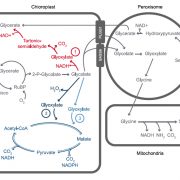
Synthetic glycolate metabolism pathways stimulate crop growth and productivity in the field ($) (Science)
Plant Science Research WeeklyRubisco uses CO2 from the air to carboxylate its substrate RuBP, resulting in an increase in fixed carbon. However, rubisco can also oxygenate RuBP and this leads to the production of glycolate. Plants must invest energy in recycling this toxic by-product in a process called photorespiration, resulting…

